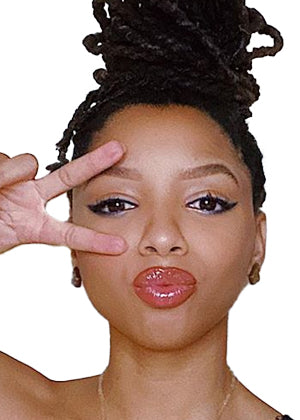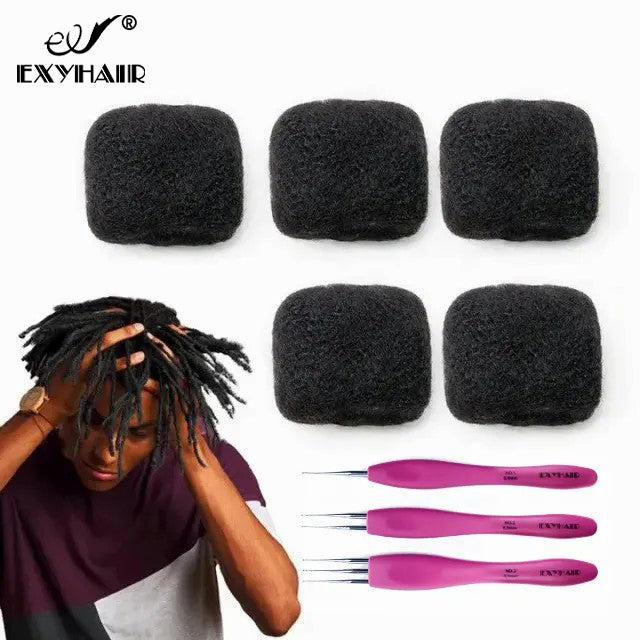Are Hair Extensions Bad for Your Hair?
 Hair extensions have become a beauty essential for many—whether you’re aiming for extra length, added volume, or simply more styling freedom. From Hollywood celebrities to everyday wearers, more and more people are turning to extensions to enhance their look and boost their confidence. The appeal is clear: they offer immediate results with minimal effort.
Hair extensions have become a beauty essential for many—whether you’re aiming for extra length, added volume, or simply more styling freedom. From Hollywood celebrities to everyday wearers, more and more people are turning to extensions to enhance their look and boost their confidence. The appeal is clear: they offer immediate results with minimal effort.
However, as popular as they are, hair extensions often come with a pressing question: Are they damaging to your natural hair? It’s a valid concern—especially if you’re new to extensions or considering wearing them long term.
In this article, we’ll take a closer look at the truth behind hair extensions. We’ll break down the different types, explore both the benefits and potential risks, and most importantly, show you how to wear them safely. Whether you're interested in human hair extensions, afro kinky bulk, or other types like clip-ins or tape-ins, this guide will help you make informed decisions to protect your natural hair while enjoying all the styling versatility extensions have to offer.
What Are Hair Extensions?
Hair extensions are additional strands of human or synthetic hair that are attached to your natural hair to enhance its length, volume, or both. They offer a quick and effective way to transform your hairstyle without having to wait for your hair to grow. Depending on your styling goals, hair texture, and lifestyle, there are several types of extensions to choose from:
- Clip-ins – These are temporary extensions that can be clipped in and taken out within minutes. Perfect for occasional wear, they offer flexibility without commitment.
- Tape-ins – A semi-permanent option, tape-ins are attached using a special adhesive tape. They lie flat against the scalp, making them look natural and lightweight.
- Sew-ins or Weaves – Commonly used for coarse or thick hair, this method involves braiding the natural hair and sewing the extensions into the braids using a needle and thread.
- Keratin Bonds – Also known as fusion extensions, these are bonded to natural strands using heat-activated keratin glue. They can last for several months with proper care.
- Micro-links – These extensions are applied strand by strand and secured using tiny metal beads or rings. They don't require heat or glue but do need professional installation and maintenance.
- Loc Extensions – Specifically designed to mimic or extend dreadlocks, loc extensions are often made from afro kinky human hair to seamlessly blend with natural locs. They’re ideal for those looking to start or lengthen their loc journey instantly.
Each type of hair extension comes with its own method of application, level of upkeep, and suitability depending on your natural hair texture and lifestyle. Understanding these differences is key to choosing the right extension for your hair health and desired look.
Are Hair Extensions Bad for Your Hair?
The short answer? They can be—but only if they're applied, maintained, or removed the wrong way.
Hair extensions themselves aren't inherently harmful. In fact, when installed correctly and cared for properly, they can coexist with healthy natural hair. But just like any beauty enhancement, there are risks if you're not careful. Let’s break it down.
Potential Risks of Hair Extensions
1. Tension and Traction Alopecia
One of the biggest concerns is traction alopecia—a condition caused by prolonged tension on the hair follicles. This is especially common with tightly installed styles such as sew-ins, micro-links, or even poorly applied loc extensions. If the extensions are pulling too tightly at the scalp, it can lead to hairline thinning, scalp soreness, and in severe cases, permanent hair loss. People with fine or fragile hair textures should be extra cautious.
2. Breakage and Shedding
Extensions that are too heavy or not well-matched to your natural hair density can put excess stress on your strands. This can result in breakage at the roots, mid-shafts, or ends—particularly if you're using poor-quality products or removing them roughly. For example, while afro kinky bulk human hair is a great match for natural textures, it still needs to be installed with care to avoid unnecessary strain.
3. Scalp Irritation or Infection
Wearing extensions doesn’t mean you can ignore your scalp. If tools aren’t sanitized or if scalp hygiene is neglected during wear, issues like dandruff, itching, inflammation, or even fungal infections can develop. This is especially a risk with longer-term installs like tape-ins, keratin bonds, or crocheted dreadlock extensions.
4. Product Build-Up and Tangles
Extensions require regular maintenance—not just for appearance, but for the health of your natural hair underneath. Product build-up from oils, gels, or edge control (especially if you use styling products frequently) can clog pores and suffocate the scalp. At the same time, neglecting to detangle your hair properly between your natural roots and the extension hair can lead to severe matting, which may be difficult or painful to remove.
In short, extensions themselves aren't "bad." The damage usually comes from improper use, poor-quality materials, or lack of aftercare. With the right techniques, products, and professional guidance, even styles like afro kinky loc extensions or full-head human hair sew-ins can be worn safely and beautifully—without harming your natural hair.
How to Wear Hair Extensions Safely
The good news? Hair extensions don’t have to damage your natural hair. In fact, when done right, they can actually help you protect your hair by minimizing daily heat styling and manipulation. Many people wear extensions for years without experiencing any damage. The key is making smart choices—from the hair you use to how you care for it.
1. Choose High-Quality Hair Extensions
Always invest in 100% human hair extensions, especially if you’re looking for a natural look and long-term wear. For styles like dreadlocks, twists, or braids, Afro Kinky Bulk Human Hair is ideal because it blends seamlessly with natural textures and holds styles well. Synthetic hair may seem affordable, but it tends to be heavier, less breathable, and more prone to causing scalp irritation or tangling over time.
2. Work With a Professional Stylist
One of the most common causes of damage from extensions is improper installation. A skilled stylist knows how to install extensions with the right tension, match them to your hair type, and avoid stressing your roots. This is particularly important for delicate styles like microlinks, keratin bonds, or loc extensions made with afro kinky human hair, where the balance between a secure hold and scalp health is critical.
3. Don’t Keep Extensions In Too Long
Extensions aren’t meant to be permanent. Leaving them in for too long can lead to tangling, matting, or buildup at the roots. It also increases the risk of traction alopecia and scalp irritation. For example, afro kinky loc extensions should be checked regularly and maintained by a professional every few weeks to ensure your natural hair stays healthy underneath.
4. Prioritize Scalp and Hair Care
Even with extensions in, your scalp still needs attention. Keep it clean, moisturized, and free from product buildup. Use lightweight oils or sprays to hydrate your scalp without clogging the pores. Depending on your extension type, gently wash your scalp and hair regularly using sulfate-free, extension-safe shampoos and conditioners. If you're wearing textured styles like twists or braids with kinky bulk, avoid heavy creams that can cause matting.
5. Give Your Hair Time to Rest
Continuous wear of extensions without a break can exhaust your hair and scalp. After a few weeks or months of wear, take the time to remove the extensions, trim split ends, and deep-condition your natural hair. Use this break to restore moisture, strengthen your strands, and assess your scalp health before the next install.
In summary, wearing extensions safely is all about balance: choose high-quality hair, work with professionals, and never neglect your own hair underneath. With the right habits, you can enjoy the beauty and versatility of styles like afro kinky dreadlock extensions without compromising the health of your natural hair.
When Are Hair Extensions Actually Good for Your Hair?
While extensions are often discussed in the context of potential damage, it might surprise you to learn that—when used correctly—hair extensions can actually be beneficial for your natural hair. Here are a few situations where extensions might support, rather than harm, your hair health:
1. Protective Styling for Hair Health
Hair extensions can serve as a protective style, especially for those with textured or fragile hair. Styles like braids, twists, or loc extensions made from afro kinky bulk human hair help shield your natural strands from daily wear and tear. By reducing exposure to environmental stressors (like sun, wind, and humidity) and minimizing manipulation (combing, brushing, or heat styling), extensions can actually prevent breakage and promote length retention.
2. Transitioning to Natural Hair
If you’re growing out chemically treated hair—such as relaxers, perms, or color damage—extensions can make the transition easier. Styles like twists, crochet braids, faux locs, or even dreadlock extensions help blend the two textures while protecting the weaker, processed ends. Afro kinky hair extensions, in particular, are excellent for achieving natural-looking volume and texture during this phase.
3. A Boost in Confidence
Never underestimate the emotional impact of a good hairstyle. Many people turn to extensions during times of hair thinning, postpartum shedding, or even after a bad haircut. Fuller, longer, or more voluminous hair can instantly improve self-image and confidence, and that sense of empowerment matters just as much as the physical results. When you feel good, you carry yourself differently—and that positivity can spill over into other areas of your life.
In short, extensions aren't just about aesthetics—they can also be a strategic tool for hair care and personal transformation. When paired with high-quality human hair, proper installation, and good maintenance habits, they can support your natural hair goals rather than sabotage them.
Final Verdict: Are Hair Extensions Bad for Your Hair?
Not necessarily. Hair extensions themselves are not inherently damaging—what truly matters is how you choose them, how they’re applied, and how well you care for them once installed.
When made from high-quality human hair and installed using the proper techniques—especially by a trained professional—extensions can be worn safely and responsibly. In fact, with regular maintenance and good scalp hygiene, they can even act as a protective style, helping you preserve length and reduce breakage from daily styling or environmental stress.
So, are hair extensions bad for your hair?
No—if done right, they can be one of the smartest styling choices you make.
Ready to Try High-Quality Hair Extensions?
If you’re looking to create beautiful dreadlocks, twists, or natural-looking locs, our Afro Kinky Bulk Human Hair at Exyhair.com is exactly what you need. We specialize in 100% virgin human hair that's breathable, durable, and designed for all-day comfort—perfect for crochet, interlocking, or starting your loc journey.
Not sure which type of extension is right for your hair?
Reach out to us today—our team is here to guide you every step of the way.
Because at Exyhair, we’re not just about hair—we’re about helping you glow, naturally.



















